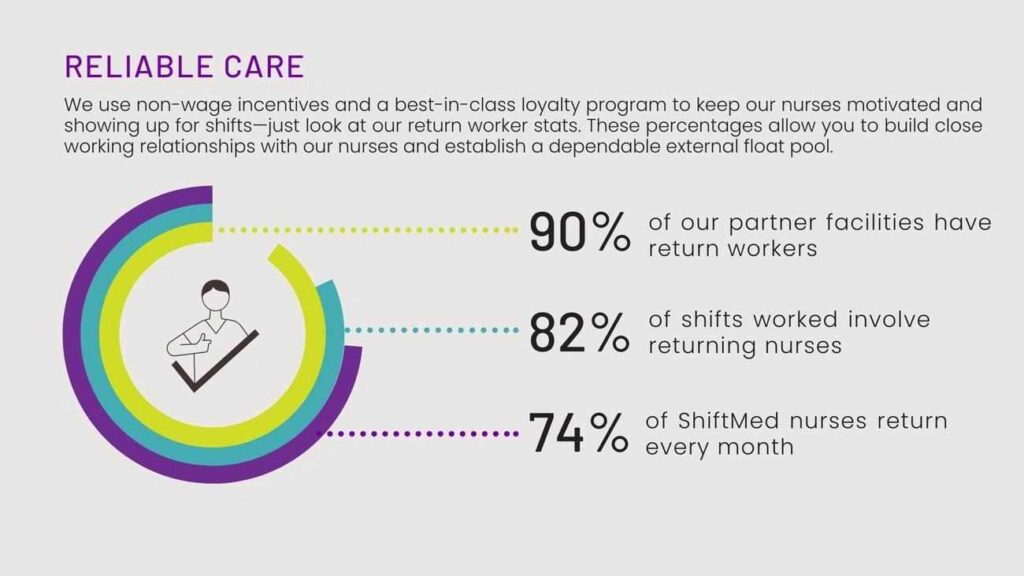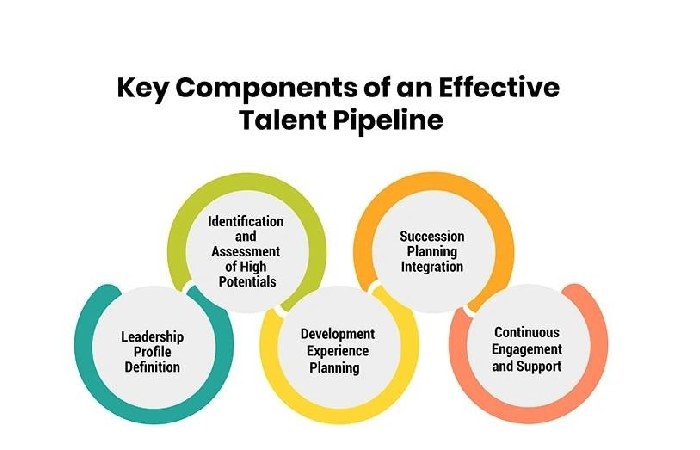Healthcare facilities face significant staffing challenges during predictable seasonal surges. The first quarter often brings renewed budgets and an immediate need for additional medical personnel, setting the tone for the rest of the year. As the seasons shift, new issues emerge and create ongoing pressure on clinical teams.
During winter, hospitals, urgent care centers, and physicians’ offices see increased patient activity linked to viral outbreaks. Summer introduces a different set of difficulties as many employees take vacation leave and communities experience more injuries related to outdoor activities, including sprains, fractures, and respiratory concerns. Toward the end of the year, facilities often need to expand their workforce again due to budget deadlines and holiday staffing requirements.
These repeating patterns make thoughtful staffing strategies essential for maintaining quality care. By examining historical data and using effective workforce management tools, healthcare organizations can prepare themselves for the busiest months. This piece explores practical ways to ensure consistent, high quality care even when patient demand is at its peak.
Partner with Healthcare Staffing Solutions Providers

Specialized agencies excel at tackling healthcare’s unique staffing challenges. Time Magazine reports that the hiring process hit 44 days in early 2023. Your facility might struggle with poor coverage during this extended timeline, putting patient care at risk. Staffing solutions providers speed up this process dramatically and connect you with qualified candidates within days instead of weeks or months.
These agencies keep detailed databases of healthcare professionals in every specialty. From registered nurses and physicians to allied health professionals and administrative staff, they continuously scout exceptional candidates through extensive networks. Your organization benefits from this diverse talent pool, which proves especially valuable when specialized skills become crucial during seasonal peaks.
Money savings show up in several ways:
- No more recruitment costs for ads, background checks, and screening
- Lower overtime expenses through flexible peak period staffing
- Zero employer-related costs for temporary staff
- Fewer expenses from turnover and bad hires
- Better resource use during patient volume changes
These agencies understand healthcare’s demands and provide staff quickly during unexpected absences or patient surges. Peak seasons become manageable when you can rely on qualified professionals at short notice.
Seasonal changes become easier to handle with staffing agency support. They cover all shifts – days, evenings, weekends, and holidays – giving you scheduling flexibility during peak times. Your permanent staff avoids burnout while care quality stays high year-round.
A growing number of facilities are also turning to flexible staffing models that let them respond to rapid changes in patient volume. One example is prn nurse staffing, which gives organizations access to qualified clinicians only when they are needed. Providers such as Nursa support this approach through real-time connections with licensed nurses who can step in during peak demand, helping stabilize coverage without straining core teams.
Forecast Staffing Needs Early

Healthcare facilities see great results from early staffing forecasts. They can predict patient numbers with remarkable accuracy by looking at past admission records and factors like seasonal patterns. This knowledge lets them adjust staff levels so the right professionals are ready exactly when patients need them.
Modern healthcare forecasting uses three main methods:
- Time-series analysis – Recognizes patterns from historical data
- Machine learning – Makes use of large datasets to find hidden trends
- Simulation-based techniques – Tests different scenarios to adjust staffing
Machine learning and artificial intelligence have become game-changers in predicting healthcare staffing needs. Lin and team showed that machine learning algorithms trained on various healthcare facility datasets worked better than old models at predicting nursing workforce needs. Real-time data feeds into dynamic simulation models to update staffing predictions, which creates responsive workforce planning solutions.
GE HealthCare’s Command Center shows how AI solutions turn complex data into practical insights. Healthcare leaders can now plan ahead instead of just reacting to staffing needs. These advanced machine learning models help hospitals predict bed use and resource needs with amazing accuracy. Duke Health now predicts staffing needs 14 days ahead with 95% accuracy and has cut temporary labor needs in half.
Predictive staffing does more than just ensure enough coverage. This method optimizes staff levels based on need and can improve operating margins. Other benefits include:
- Lower costs for contract labor
- Better planning for float pool and per diem staff
- Less staff burnout and moral injury
- Better work environments
- Less time spent on administrative tasks
- Staff can work at their highest skill level
Planning ahead brings many benefits. Organizations have enough time to train new hires before peak seasons start. Starting 2-3 weeks early lets temporary staff become fully trained before patient numbers increase. Early hiring matters because many operations need 2-4 weeks before staff work at full capacity.
Healthcare organizations can get the most from forecasting by:
- Using AI tools to predict staffing needs
- Building relationships with schools to create talent pipelines
- Creating forecasting teams with clinical leaders, finance, and HR
- Checking forecast accuracy monthly
Build a Year-Round Talent Pipeline

Educational partnerships are the life-blood of lasting talent pipelines. Healthcare providers that cooperate with universities, colleges, and vocational schools help develop skilled workforces. These organizations also secure qualified professionals for their needs. Such partnerships go beyond traditional recruitment by letting providers participate in curriculum development, clinical rotations, and internships.
The Baltimore County initiative shows this approach in action. The University of Maryland St. Joseph Medical Center teamed up with the Community College of Baltimore County. Together, they connected residents from underserved communities with nursing positions through tailored educational programs. Their Public Health Pathways Program offers 30 scholarships that cover tuition and educational fees for certified nursing assistant programs. Students also receive $1,000 monthly stipends to help with transportation or childcare costs.
Graduates get guaranteed employment with full benefits while they continue their education to become licensed practical nurses. They receive mentorship, tutoring, and ongoing guidance—creating a direct path from education to employment.
Early student engagement brings big benefits. Healthcare organizations can better predict when students will enter the workforce by building relationships during their educational experience. Talent acquisition teams can plan more effectively and rely less on expensive last-minute contract labor.
Hard-to-fill positions need targeted candidate sourcing. Healthcare organizations should:
- Know which roles are hardest to fill, like specialty nurses, therapists, and physicians
- Use the right keywords on career websites to attract passive candidates
- Network with potential candidates at healthcare conferences
- Connect with local nursing and medical school alumni, since many stay nearby after licensing
- Reach out to past qualified candidates about current openings
Leverage Temporary and Per Diem Staff

Healthcare organizations can find quick relief during their busiest times through flexible staffing solutions. Quality care stays consistent when organizations deploy temporary staff strategically to handle changing patient numbers throughout the year. Smart temporary staffing strategies help us respond to seasonal increases without affecting patient care quality.
The temporary healthcare staffing market has several distinct categories. Travel nursing makes up 32% of the market, while per diem nursing accounts for 21%. Locum tenens physicians represent 23%, and allied healthcare services make up the remaining 23%. Healthcare facilities can adjust their staff levels quickly as patient numbers change with these professionals.
The per diem staffing market will likely grow beyond USD 10 billion by 2025. This growth shows how important flexible staffing has become. U.S. healthcare industry experts warn about a possible shortage of up to 3.2 million caregivers by 2026, making these professionals even more valuable.
Temporary staff excel in specific situations:
- Managing sudden increases in patients during flu season or respiratory outbreaks
- Covering staff vacations, PTO, or medical leave
- Supporting new permanent hire orientation periods
- Offering specialized expertise for specific procedures or patient groups
- Starting new service lines or units
Temporary staff bring more value than just coverage. Research shows that having more temporary staff reduced negative outcomes from low baseline staffing. However, higher baseline staffing proved more economical because it cut staff costs and reduced adverse outcomes. This highlights why strategic baseline staffing with temporary support works well.
Cross-Train Staff for Flexibility

Healthcare facilities that cross-train their staff create professionals who can work in multiple roles across departments. This approach is vital to maintain quality care during seasonal surges. Your current workforce becomes more flexible through cross-training, which works better than bringing in outside help.
Healthcare settings offer various dimensions of multiskilling:
- Basic patient care skills cross-training: Staff learn routine procedures like suctioning patients, monitoring vital signs, and transferring patients. This eliminates delays that occur while waiting for specific personnel.
- Professional non-clinical skills cross-training: Staff develop competencies in patient education, technical writing, and team leadership.
- Administrative skills cross-training: Clinical practitioners take on quality improvement, case management, and systems design instead of centralizing these tasks in administrative positions.
- Clinical disciplines cross-training: Practitioners learn to perform services that traditionally belong to other disciplines.
Organizations with cross-training programs see productivity increase by up to 20% and response times improve by 15% during shift changes or production fluctuations. Your healthcare facility can respond better to seasonal surges or staff shortages because cross-trained employees adapt to different tasks naturally. This allows for flexible deployment based on immediate needs.
Staff flexibility becomes particularly valuable during peak seasons. You can move multi-skilled workers between departments as patient numbers change, which reduces the need to hire temporary staff. This approach eliminates bottlenecks that happen when only a couple of people know how to complete critical processes.
Cross-training also encourages better team dynamics. Research shows it substantially improves teamwork by building better interpersonal collaboration and communication. Teams perform better in high-stress environments after cross-training – exactly what’s needed during seasonal surges. Staff members often become teachers who explain their regular duties, which creates an environment of continuous learning.
Here’s how to make cross-training work:
- Choose key roles for cross-training, with focus on essential functions like caregiving, housekeeping, and administrative tasks.
- Develop structured training plans with step-by-step modules for each role.
- Let experienced employees mentor others for hands-on learning.
- Start recognition programs for staff who finish cross-training.
A Stronger Path Through Every Season
Preparing healthcare teams for peak demand is not simply a staffing exercise. It is a commitment to patient safety, employee wellbeing, and the long-term strength of an organization. Seasonal surges will always place pressure on clinical environments, yet the strategies explored throughout this guide show that pressure does not need to disrupt the quality of care.
When facilities embrace forecasting tools, cultivate long-term talent partnerships, and maintain flexible staffing options, they create environments that remain steady even when patient volumes rise. Cross-training strengthens teamwork and keeps daily operations moving with confidence. Strategic support through temporary and per diem professionals ensures that no department carries the workload alone.
A thoughtful combination of these efforts helps create a workforce that performs well in demanding moments and remains engaged throughout the year. Strong planning, meaningful partnerships, and a well-prepared internal team give healthcare organizations the resilience they need to care for their communities in every season.


